#TestingTechnology
Explore tagged Tumblr posts
Text
Non-Destructive Testing: How Technology is Transforming Inspection and Testing
The global non-destructive testing market size is anticipated to reach USD 34,148.1 million by 2030, registering a CAGR of 7.9% from 2023 to 2030, according to a new report by Grand View Research, Inc. The market is expected to experience substantial growth during the forecast period. This growth can be attributed to the increasing manufacturing activities in both developing and developed nations.
Non-destructive Testing Market Report Highlights
The market is expected to exhibit a CAGR of 7.9% over the next eight years owing to a rise in manufacturing-related activities, globally
The services segment accounted for the largest revenue share of over 75.0% in 2022. The high upfront cost of non-destructive equipment coupled with technical complexities involved in their deployment/installation is the major reason influencing end-users to outsource their non-destructive testing operations
Rapid industrialization, especially in developing economies has significantly contributed to the growth of the market
The manufacturing vertical segment was the dominant segment in 2022 and is expected to witness a healthy CAGR of 9.3% over the forecast period owing to the increased manufacturing activities primarily in Asia Pacific.
North America dominated the market in 2022 and accounted for the largest revenue share of more than 36.0%, owing to the extensive adoption of NDT techniques in the region
For More Details or Sample Copy please visit link @: Non-destructive Testing Market Report
The application of non-destructive testing (NDT) plays a crucial role in precise fault detection, effectively reducing the probability of product/component failures and associated repair costs. NDT also accelerates the manufacturing process by eliminating potential faults beforehand. The market is expected to be driven by the advancements in non-destructive testing methods, as these technological improvements ensure accurate fault detection and significantly reduce the complexity of testing procedures.
The ultrasonic testing segment is projected to experience substantial growth, which can be attributed to factors such as the equipment's user-friendly nature, the presence of skilled technicians, and the precise detection of faults. Furthermore, the manufacturing segment is anticipated to extensively adopt NDT techniques during the forecast period due to the growing awareness of their benefits and applications.
List of Key Players of Non-destructive Testing Market
Previan Technologies, Inc.
Bureau Veritas
Fischer Technology Inc. (Helmut Fischer)
MISTRAS Group
Comet Group (YXLON International)
MME Group
TWI Ltd.
Nikon Corporation
Olympus Corporation
We have segmented the global non-destructive testing market based on offering, test methods, vertical, and region
#NonDestructiveTesting#TestingTechnology#IndustrialSafety#QualityControl#Inspection#MaterialTesting#DigitalNDT#AutomatedInspection#AIinNDT#NDTInnovation#UltrasonicTesting#RadiographicTesting#NDTTrends
0 notes
Text
Eddy Current Souter Machine-Magkraftndt
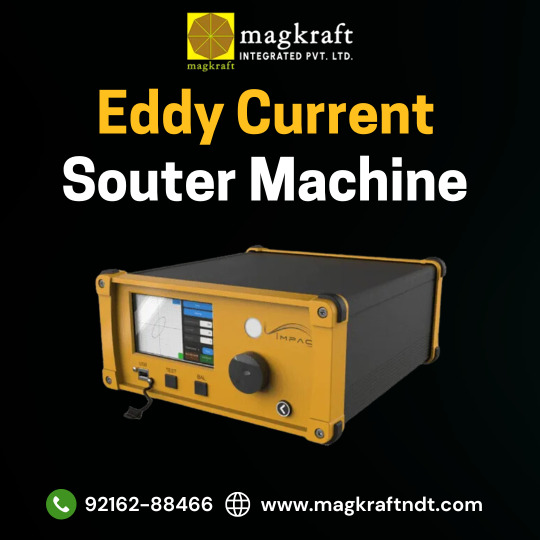
The Eddy Current Souter Machine, described by Magkraft NDT, is an instrument used for nondestructive testing of conducting materials. It is designed based on the principle of eddy current testing where an alternating current generates a magnetic field that causes circulating currents in the test material. The variations of the material properties, such as conductivity or permeability, in these eddy currents allow surface and near-surface defects to be detected. This method is highly effective in inspecting metals and alloys since it provides very rapid and reliable results without jeopardizing the integrity of the components tested.
#Magkraftndt#eddycurrentsoutermachine#eddycurrentmachine#nondestructivetesting#materialtesting#testingtechnology#mpimachine#demagnetizermachine#magnafluxmachine#magneticparticletestingmachine#mpimachinemanufacturer
0 notes
Text
Digital Bursting Strength Testing Machine
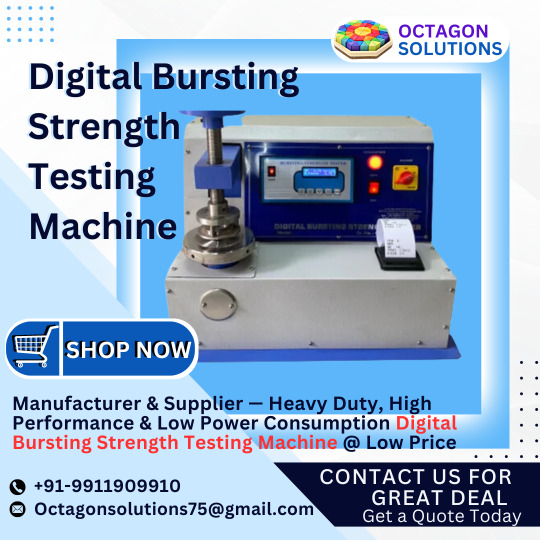
The Digital Bursting Strength Testing Machine is a state-of-the-art equipment designed to accurately measure the bursting strength of various materials such as paper, cardboard, textiles, and plastics. With its digital display and user-friendly interface, this machine provides precise and reliable results for quality control and research purposes. Its robust construction ensures durability and long-term performance, making it an essential tool for industries requiring precise bursting strength measurements.
#octagonsolutions#DigitalBurstingStrengthTestingMachine#QualityControl#TestingEquipment#IndustrialTesting#StrengthTesting#BurstingStrength#DigitalTestingMachine#QualityAssurance#IndustrialEquipment#TestingTechnology#ProductTesting#Manufacturing#QualityTesting#DigitalMachine#BurstingTest#StrengthTest#IndustrialTestingMachine#QualityControlTesting#TestingSolution#DigitalTechnology#Innovation
0 notes
Text
Breaking Boundaries: The Destructive Testing Market
The destructive testing market is witnessing steady growth as industries across sectors such as manufacturing, aerospace, automotive, and construction prioritize quality assurance and product reliability.
Destructive testing involves subjecting materials and components to extreme conditions to assess their strength, durability, and performance characteristics. With the increasing complexity of products and the need for stringent safety standards, the demand for destructive testing solutions with advanced capabilities and accuracy is driving innovation in the market.
Advancements in testing methodologies, equipment, and data analysis techniques are driving innovation in the destructive testing market, enabling manufacturers to perform comprehensive evaluations of materials and components. These advancements have led to the development of specialized testing instruments and techniques for assessing the mechanical properties, fatigue life, and failure modes of materials under various conditions. Moreover, the integration of digital imaging, non-destructive evaluation (NDE), and simulation technologies is enhancing testing efficiency and enabling predictive modeling of material behavior, empowering industries to optimize product designs and manufacturing processes.
#DestructiveTesting #QualityAssurance #ProductReliability #Manufacturing #Aerospace #Automotive #Construction #MaterialTesting #SafetyStandards #TestingTechnology #InnovationInIndustry #MechanicalProperties #DataAnalysis #NDE #SimulationTechnology #QualityControl
0 notes
Photo
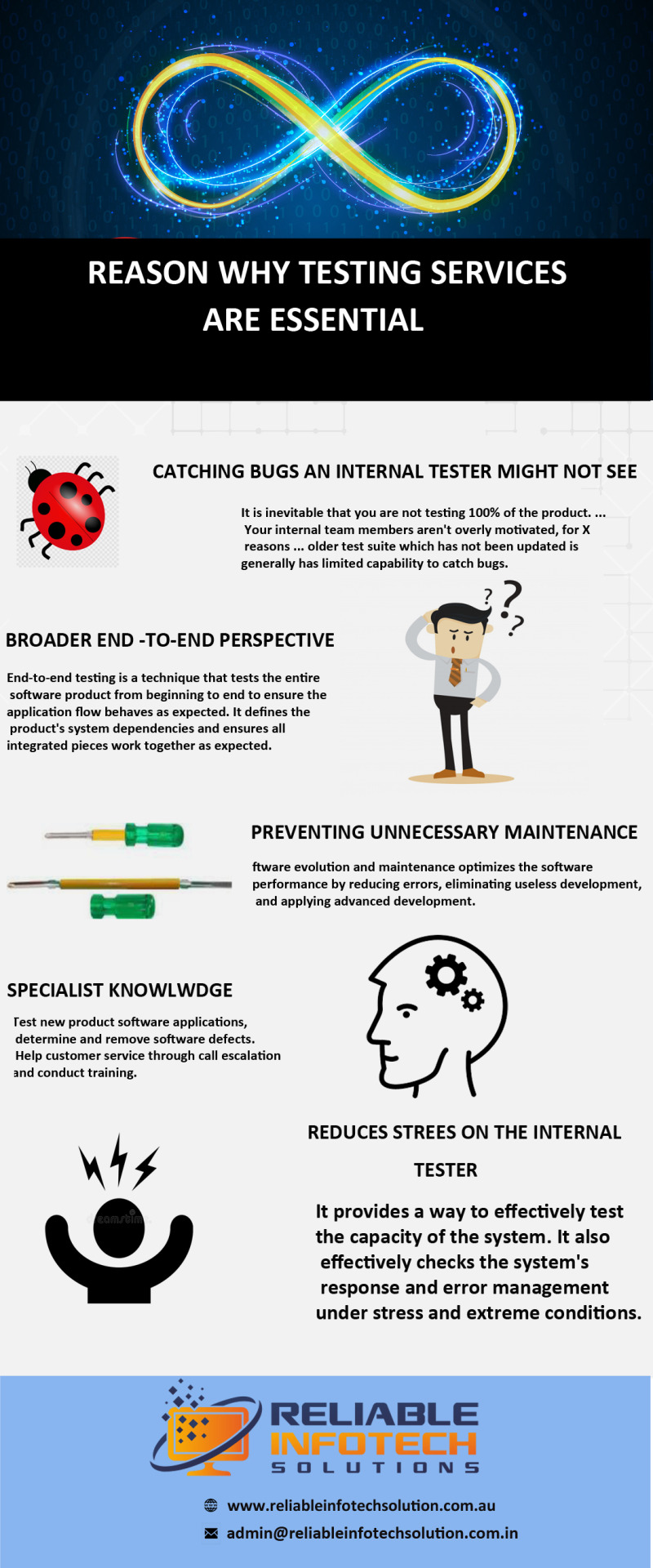
Software testing is thought-about an important for organisations that rely upon reliable, high activity and secure applications and websites. Hence, while not correct testing you may unharness a product that does not perform correctly, is slower than expected, or doesn’t integrate with existing interacting systems, all of that may result in exceedingly poor client experience. Especially, once a tiny low bug will mean lost customers and damaging of the whole image. With Reliable Infotech, we will make sure that testing be with your development lifecycle and facilitate deliver high-quality and economical business important applications
0 notes
Photo

Unico has frequently been at the forefront of providing high-performance drive systems for testing applications. With specialized drive systems for testing electric vehicle propulsion systems, we continue to be the most reliable and convenient source to meet all your electric vehicle testing requirements, from design to delivery and beyond.
https://bit.ly/3uqvlyC
0 notes
Text
Eddy Current Testing Machine-Magkraftndt
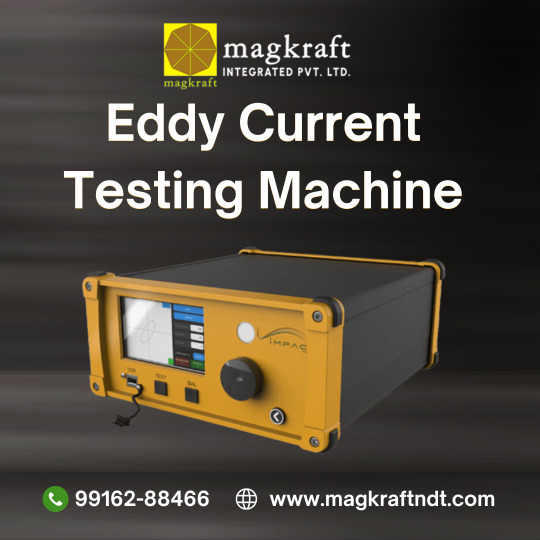
Magkraftndt Eddy Current Testing Machine uses electromagnetic induction to detect hidden flaws in metal materials. It’s quick, non-invasive, and accurate, helping ensure the quality and safety of components without causing any damage or affecting their performance.
#Magkraftndt#mpi machine#eddycurrenttestingmachine#nondestructivetesting#metaltesting#testingtechnology#magneticmahine#demagnetizermachine#magnafluxmpimachine#eddycurrentparticletestingmachine#mpimachinemanufacturer
0 notes
Text
Non-Destructive Testing: Trends, Challenges, and Future Outlook of the Global Market
The global non-destructive testing market size is anticipated to reach USD 34,148.1 million by 2030, registering a CAGR of 7.9% from 2023 to 2030, according to a new report by Grand View Research, Inc. The market is expected to experience substantial growth during the forecast period. This growth can be attributed to the increasing manufacturing activities in both developing and developed nations.
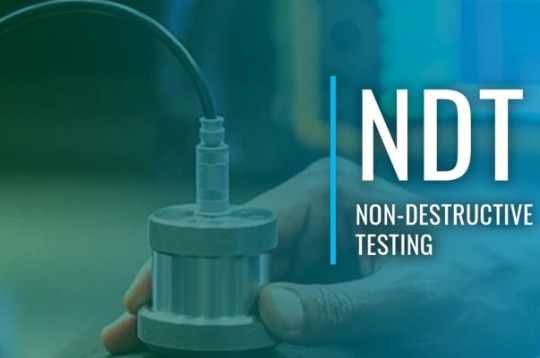
Non-destructive Testing Market Report Highlights
The market is expected to exhibit a CAGR of 7.9% over the next eight years owing to a rise in manufacturing-related activities, globally
The services segment accounted for the largest revenue share of over 75.0% in 2022. The high upfront cost of non-destructive equipment coupled with technical complexities involved in their deployment/installation is the major reason influencing end-users to outsource their non-destructive testing operations
Rapid industrialization, especially in developing economies has significantly contributed to the growth of the market
The manufacturing vertical segment was the dominant segment in 2022 and is expected to witness a healthy CAGR of 9.3% over the forecast period owing to the increased manufacturing activities primarily in Asia Pacific.
North America dominated the market in 2022 and accounted for the largest revenue share of more than 36.0%, owing to the extensive adoption of NDT techniques in the region
For More Details or Sample Copy please visit link @: Non-destructive Testing Market Report
The application of non-destructive testing (NDT) plays a crucial role in precise fault detection, effectively reducing the probability of product/component failures and associated repair costs. NDT also accelerates the manufacturing process by eliminating potential faults beforehand. The market is expected to be driven by the advancements in non-destructive testing methods, as these technological improvements ensure accurate fault detection and significantly reduce the complexity of testing procedures.
The ultrasonic testing segment is projected to experience substantial growth, which can be attributed to factors such as the equipment's user-friendly nature, the presence of skilled technicians, and the precise detection of faults. Furthermore, the manufacturing segment is anticipated to extensively adopt NDT techniques during the forecast period due to the growing awareness of their benefits and applications.
#NonDestructiveTesting#NDT#StructuralSafety#TestingTechnologies#IndustrialInspection#DefectDetection#MaterialsTesting#UltrasonicTesting#RadiographicTesting#VisualInspection#NDTMethods#NDTEquipment#NDTServices#SafetyStandards#RiskAssessment#QualityControl#NDTIndustry
0 notes
Text
Breaking Barriers: The Ceramic Tester Market
The ceramic tester market is witnessing significant growth as industries such as aerospace, automotive, electronics, and construction increasingly rely on ceramic materials for their superior properties and performance.
Ceramic testers are specialized instruments used to evaluate the mechanical, thermal, and electrical properties of ceramic materials, enabling manufacturers to ensure product quality, reliability, and compliance with industry standards. With the growing demand for advanced ceramics in high-temperature applications, wear-resistant coatings, and electronic components, the need for accurate and reliable ceramic testing solutions is driving innovation in the market.
Advancements in testing methodologies, sensor technology, and software algorithms are driving innovation in the ceramic tester market, enabling manufacturers to develop testers with enhanced functionality and performance. These advancements have led to the development of non-destructive testing techniques, such as ultrasound, X-ray diffraction, and infrared spectroscopy, which offer insights into the microstructure and properties of ceramic materials without damaging them. Moreover, the integration of automation and artificial intelligence (AI) capabilities is improving testing efficiency and accuracy, enabling rapid analysis of large datasets and facilitating data-driven decision-making in ceramic manufacturing processes.
#CeramicTester #MaterialTesting #CeramicMaterials #QualityControl #NonDestructiveTesting #IndustryStandards #TestingTechnology #Aerospace #Automotive #Electronics #Construction #Manufacturing #TechnologyInnovation #Automation #AI #QualityAssurance
0 notes